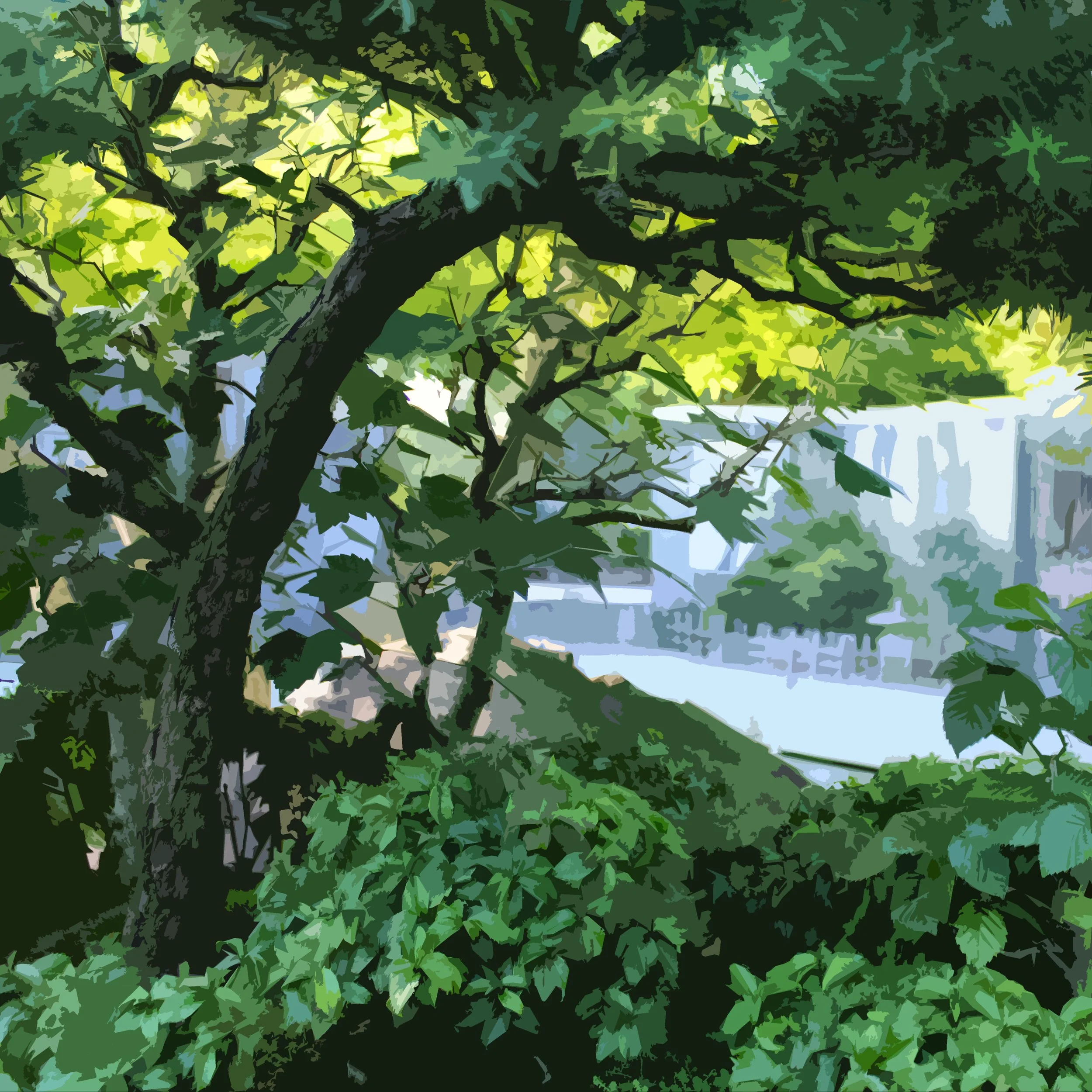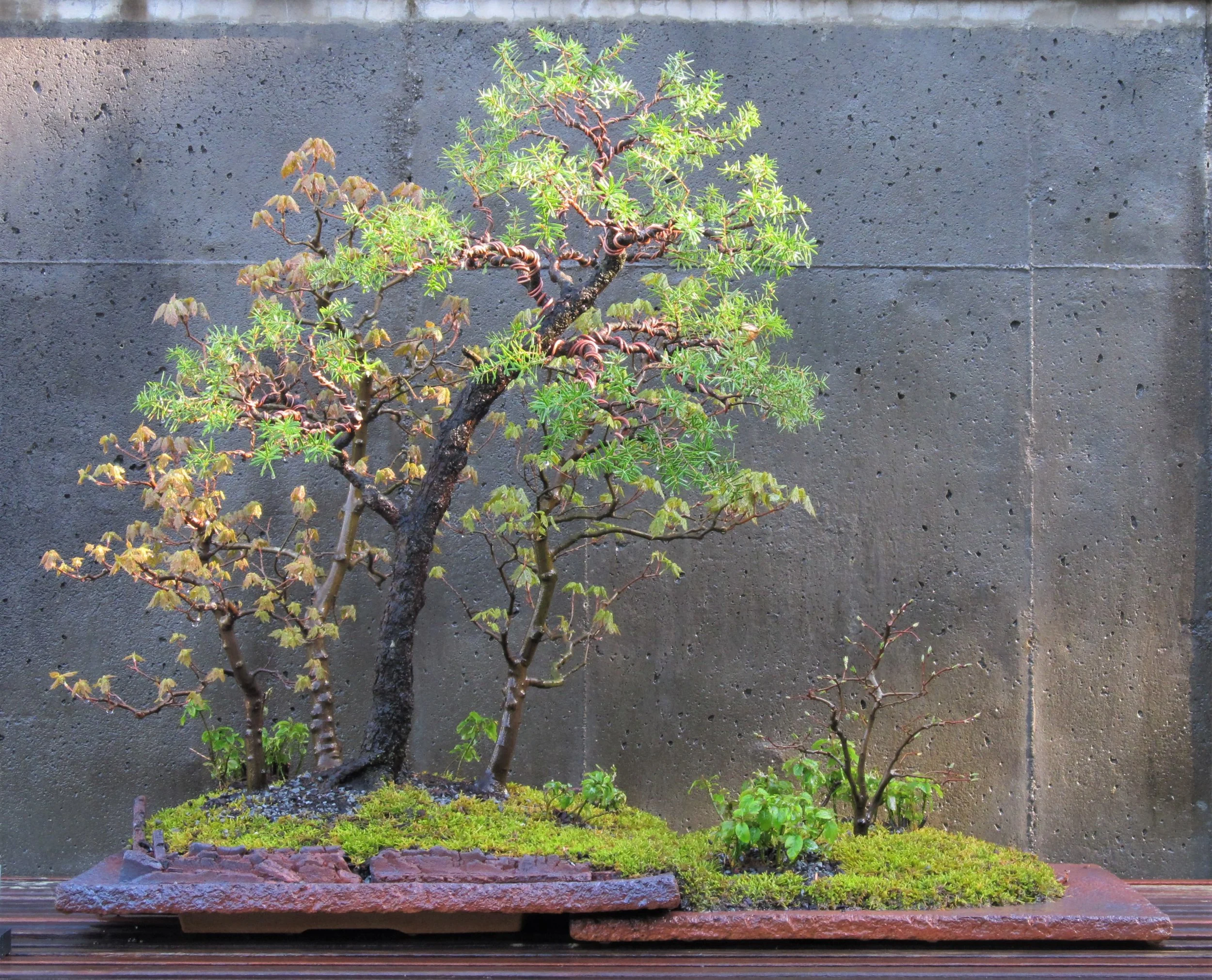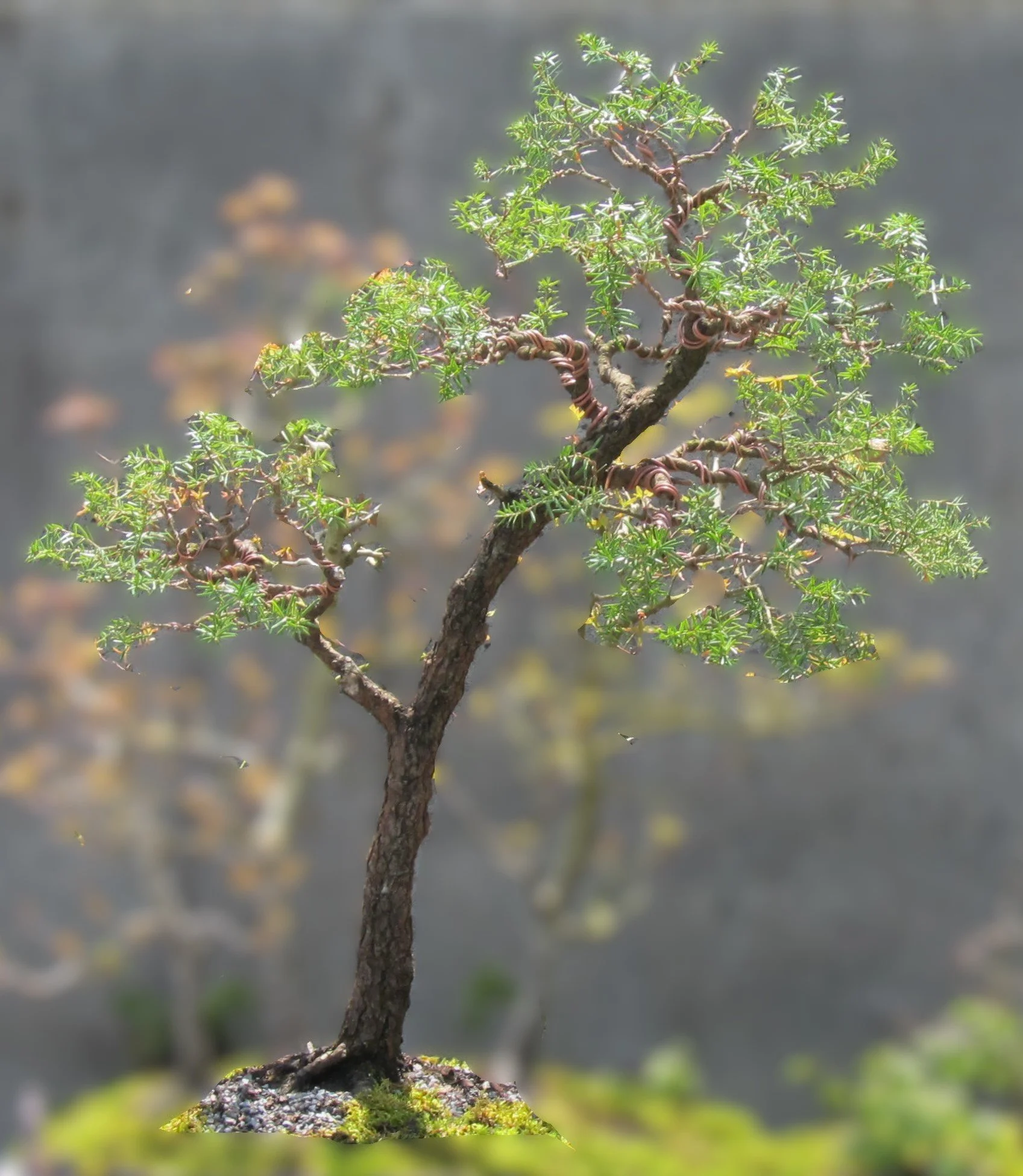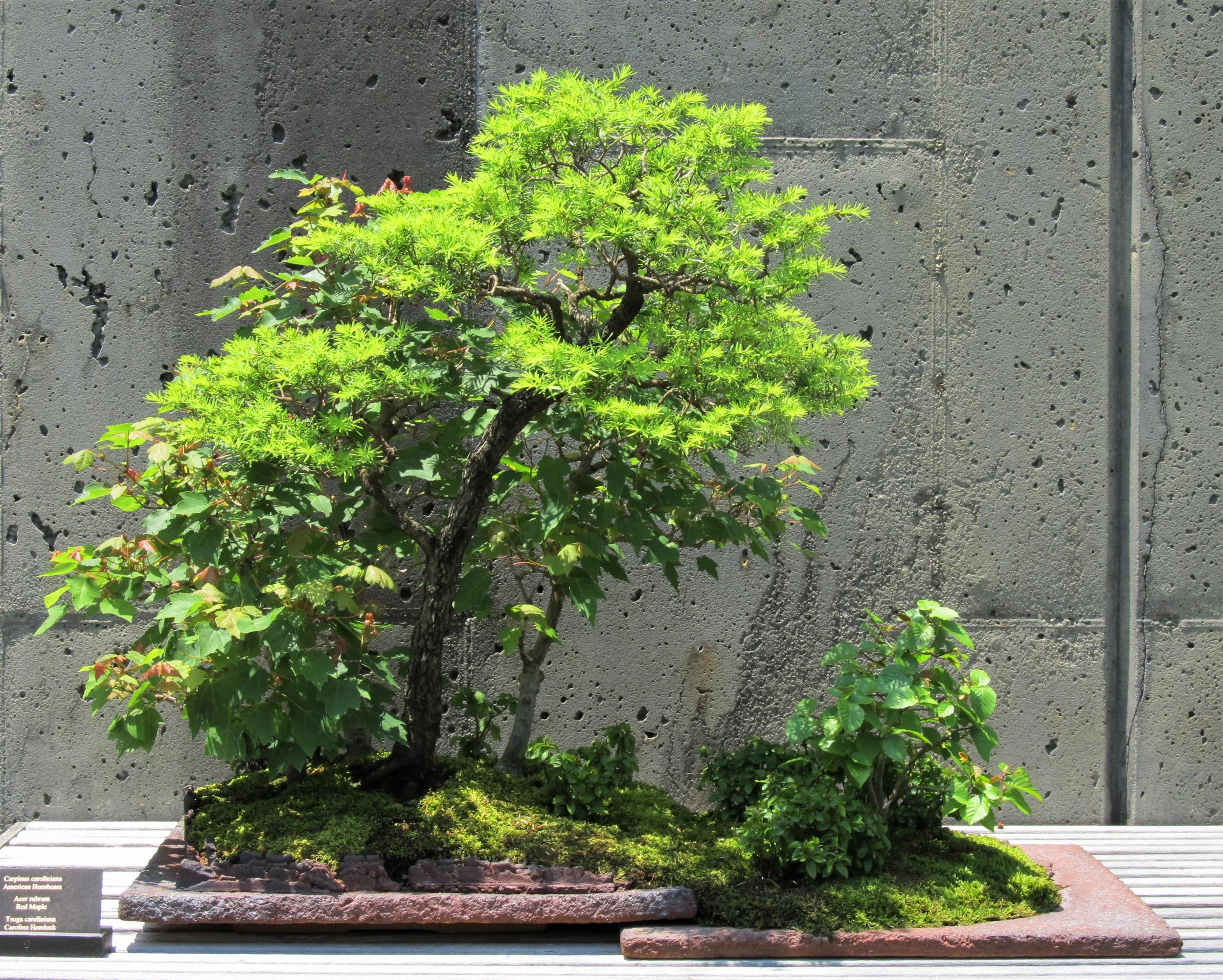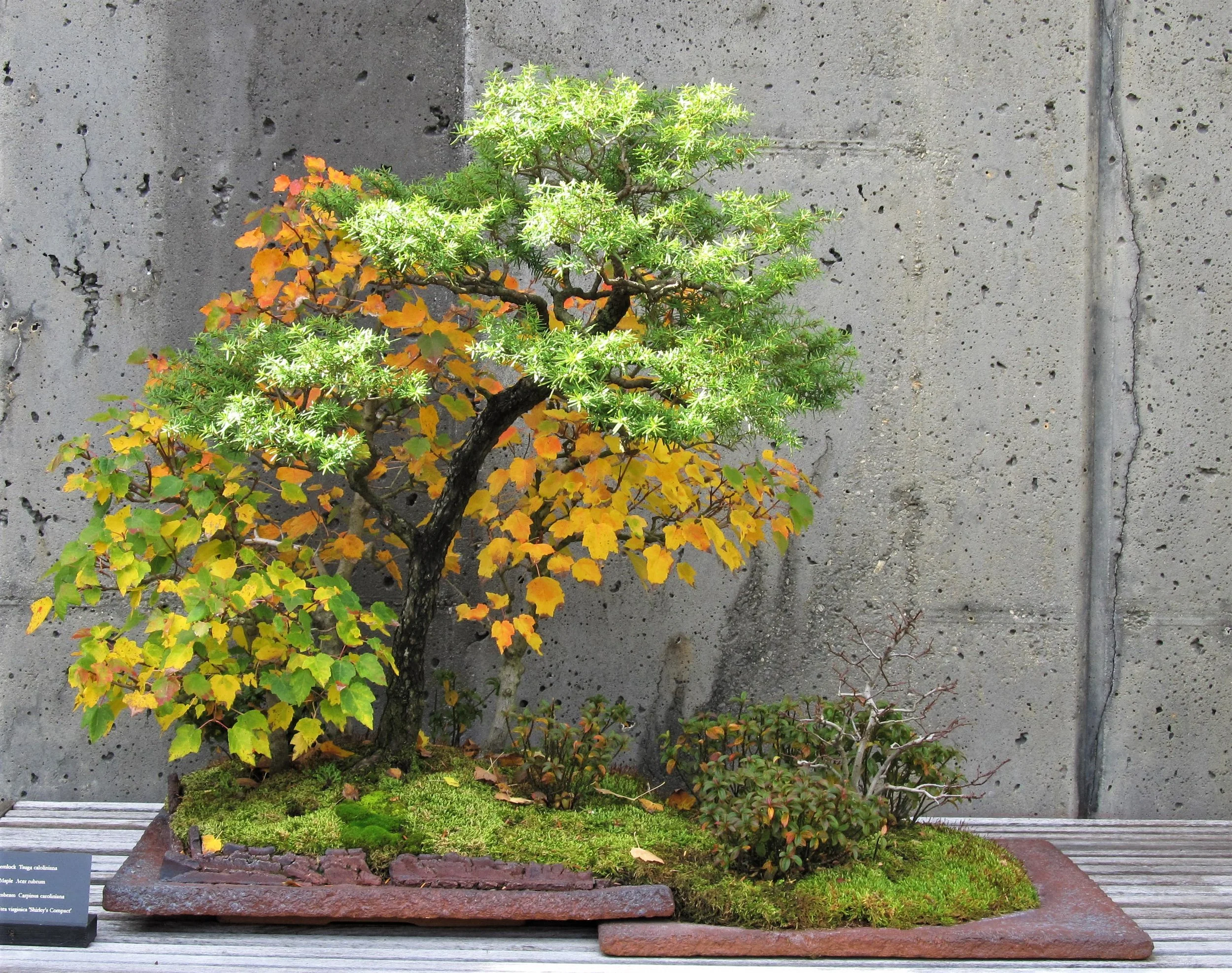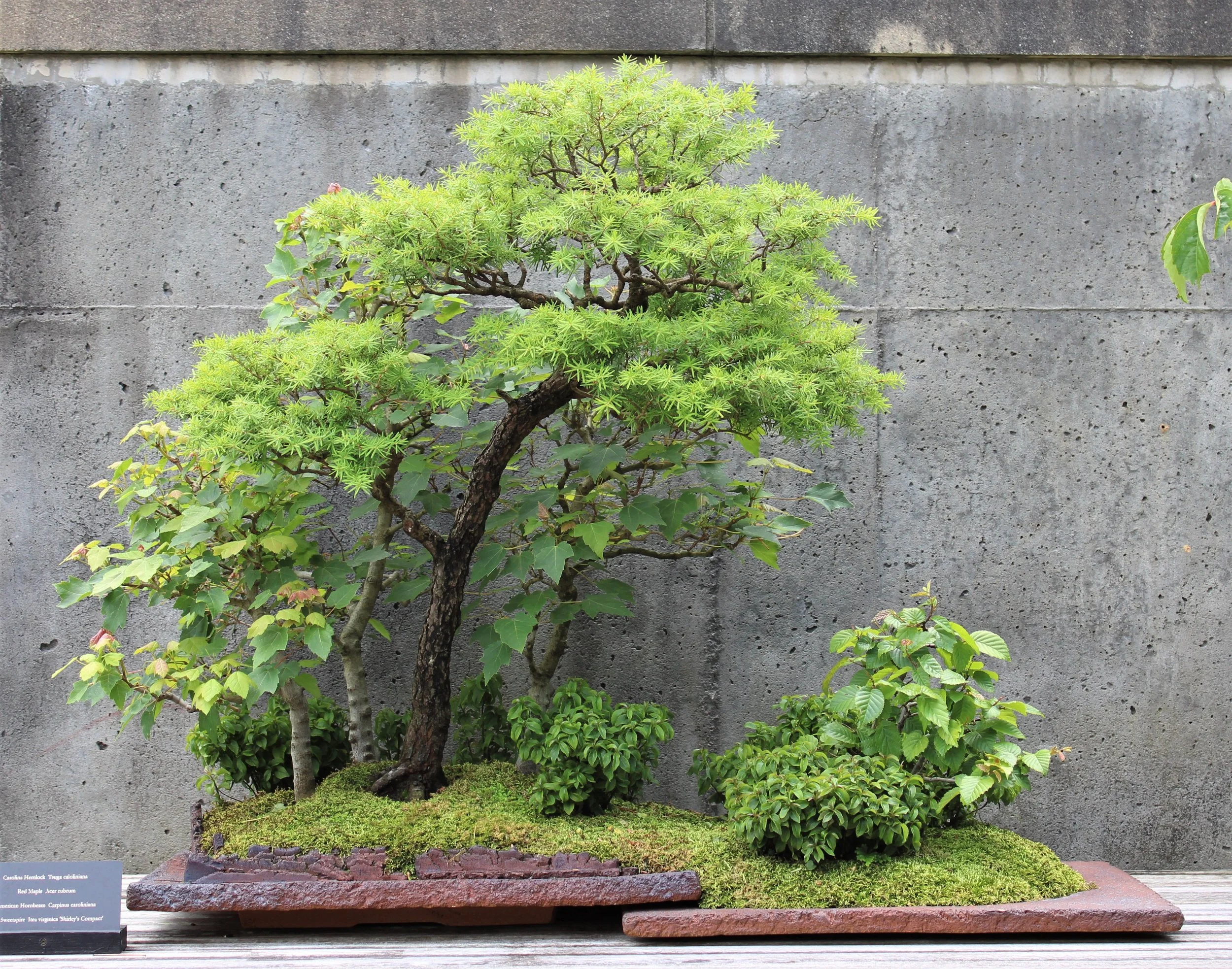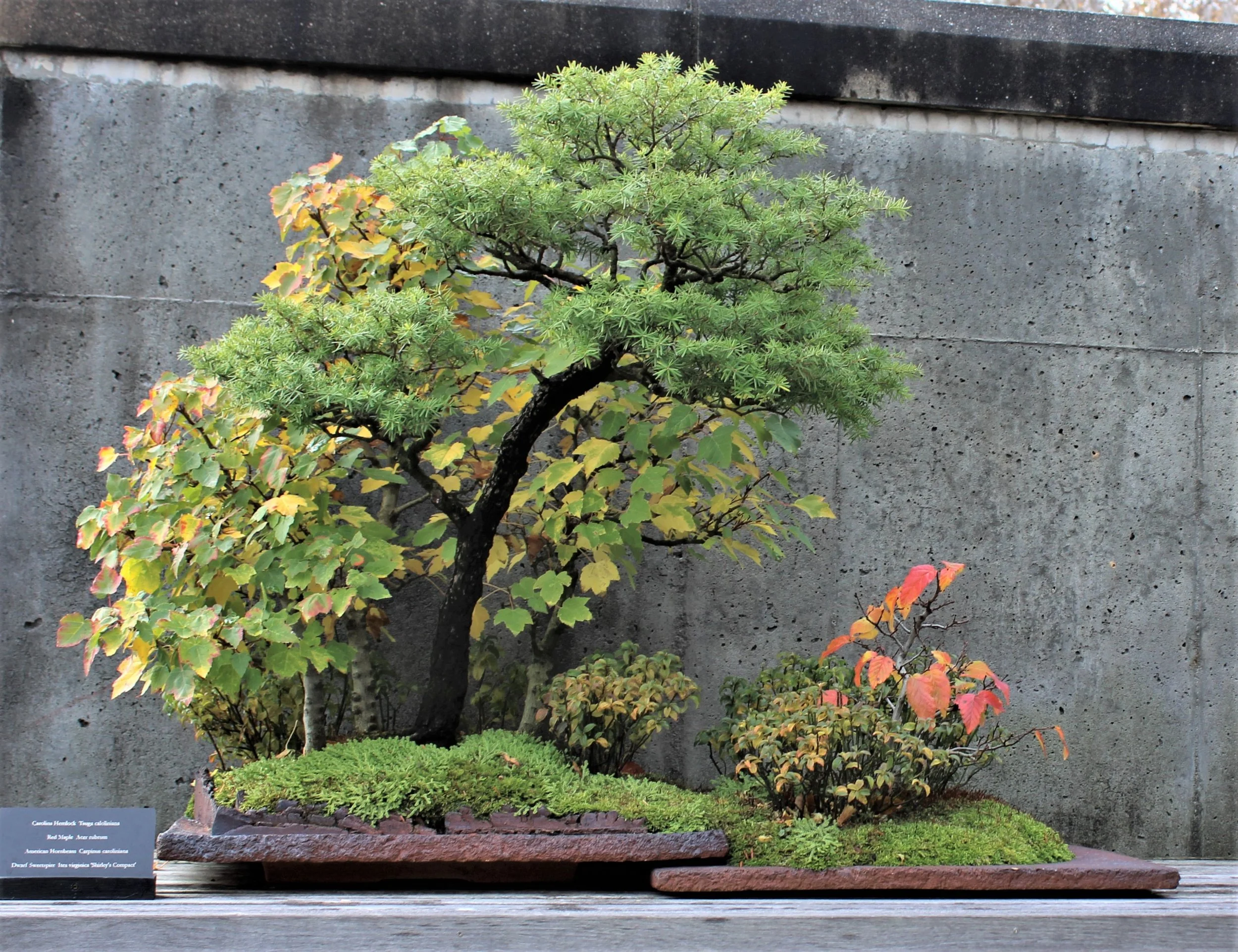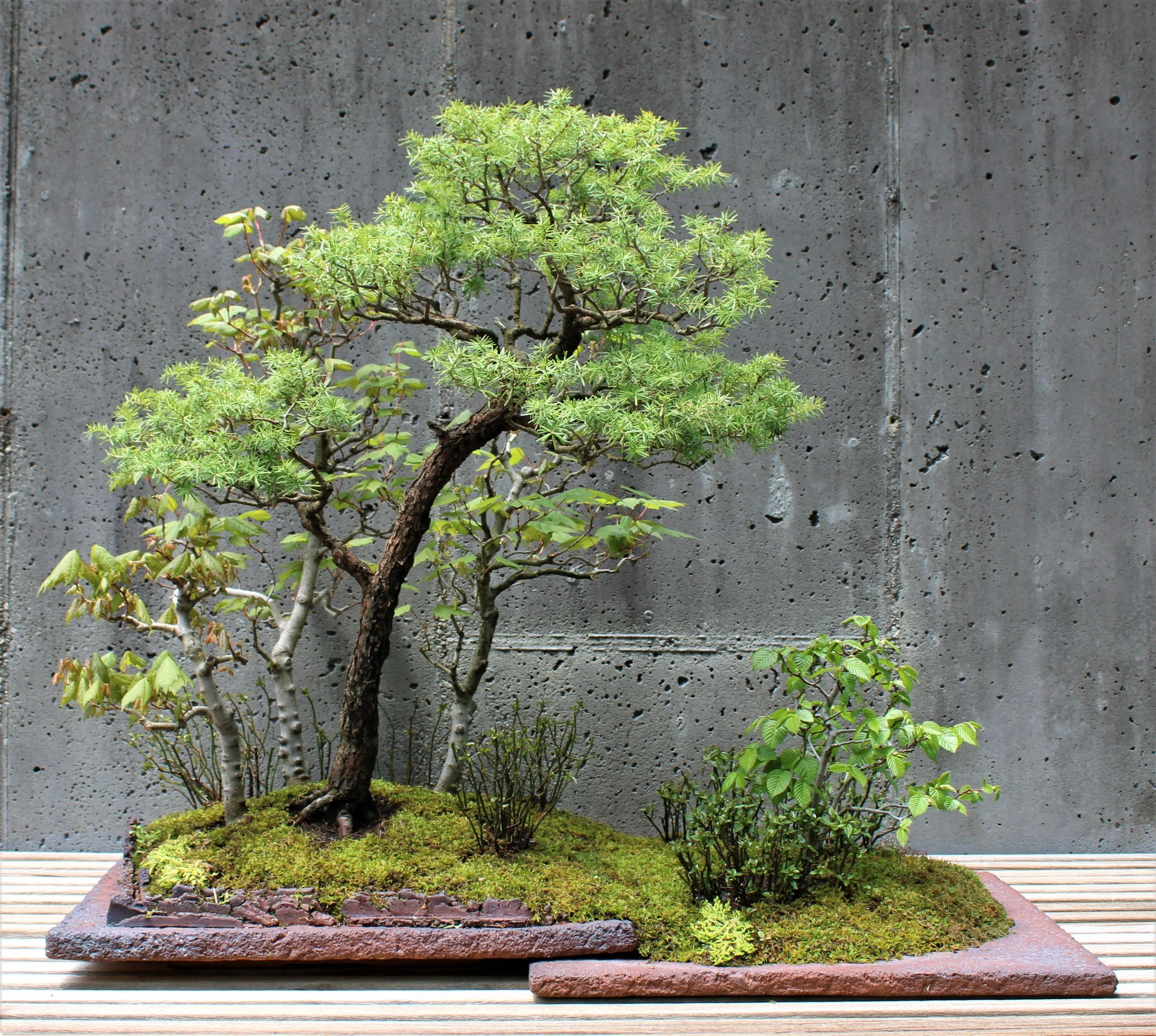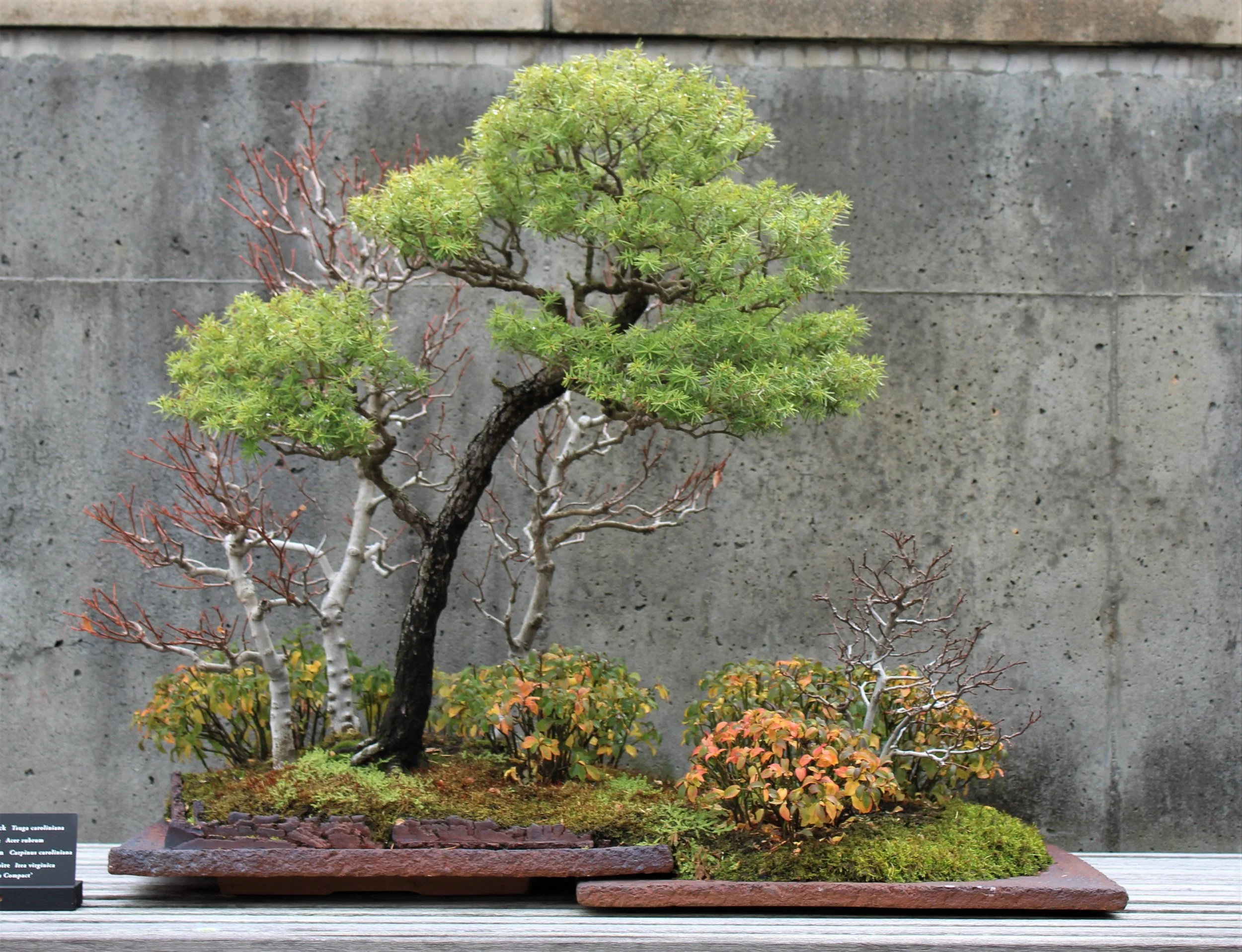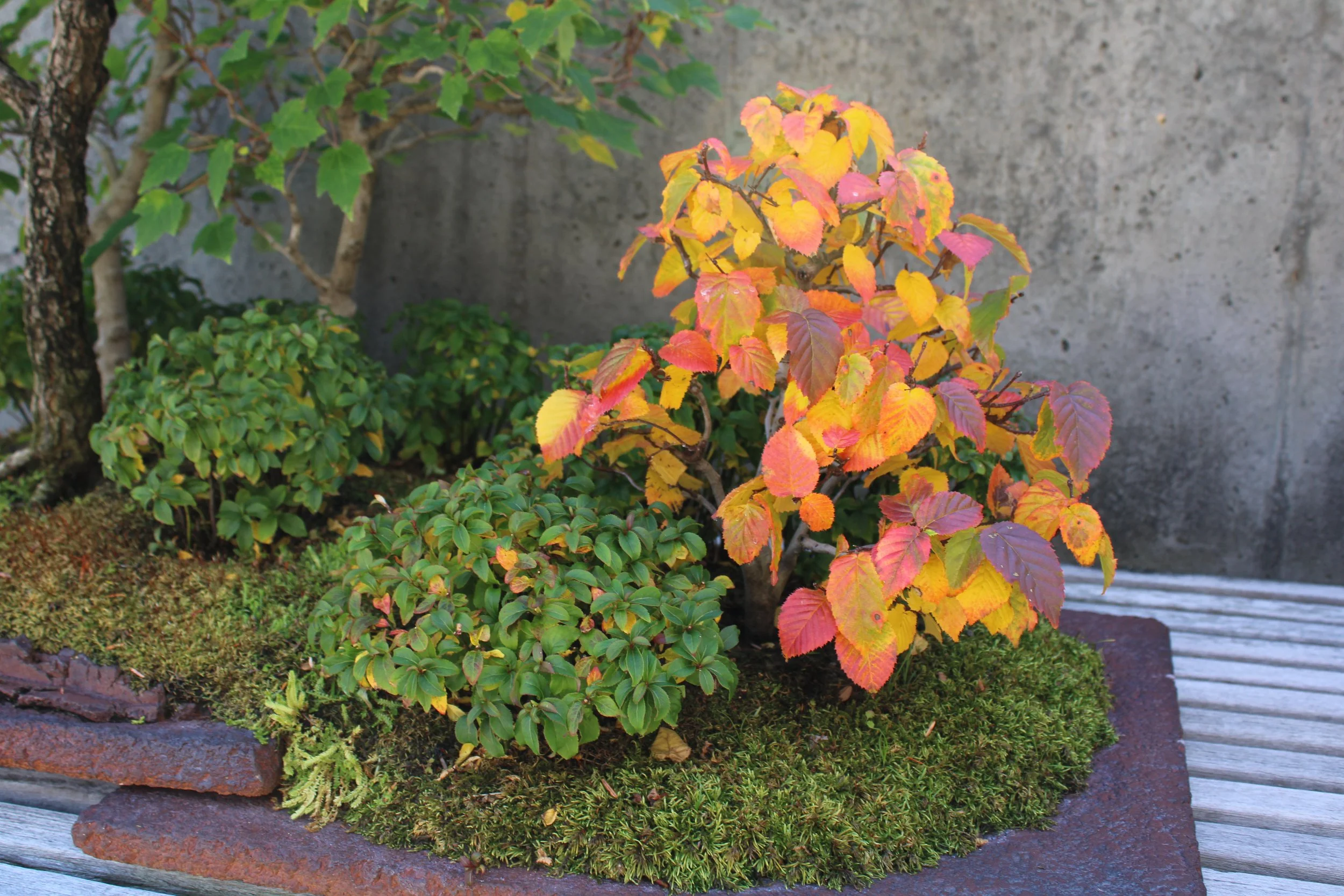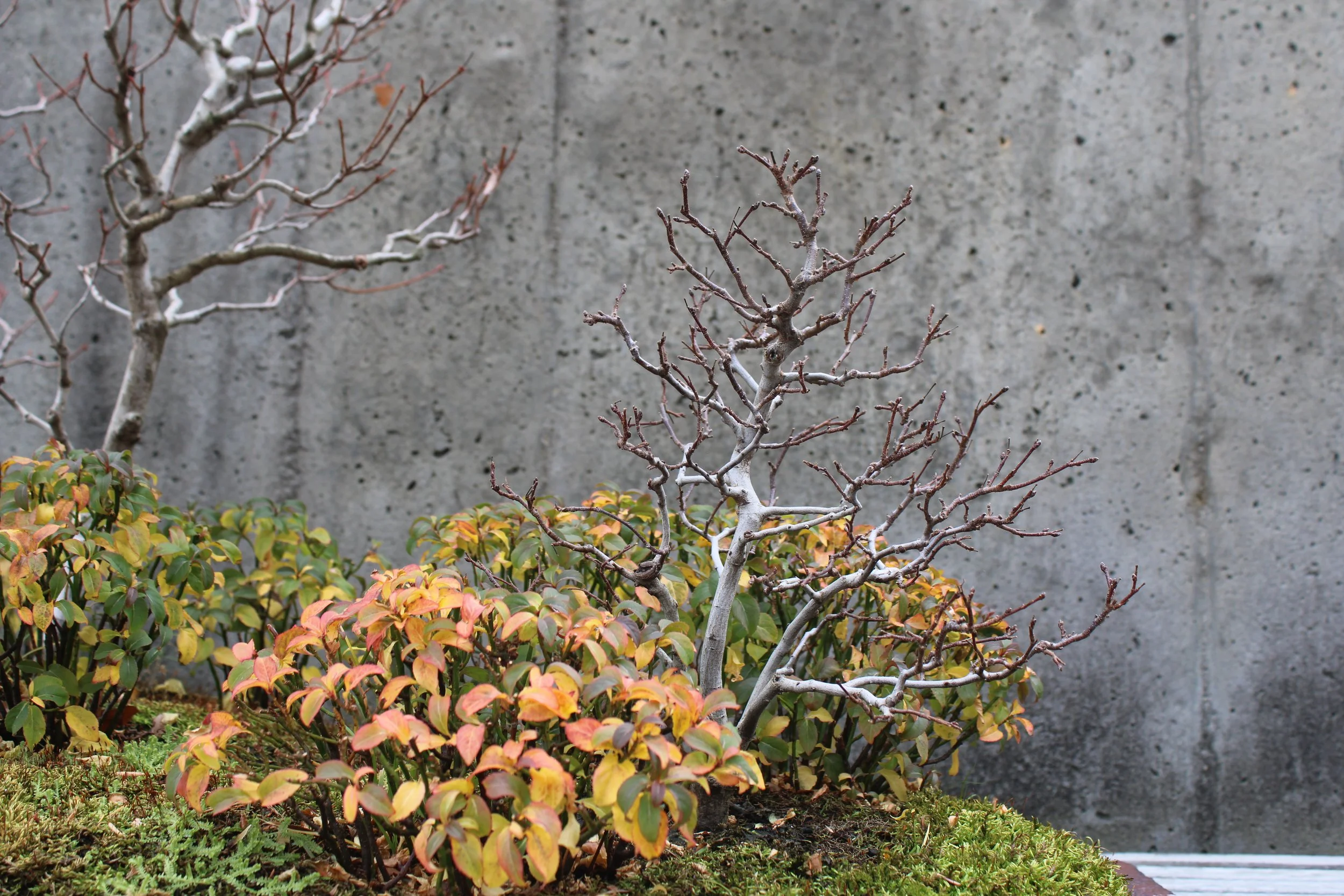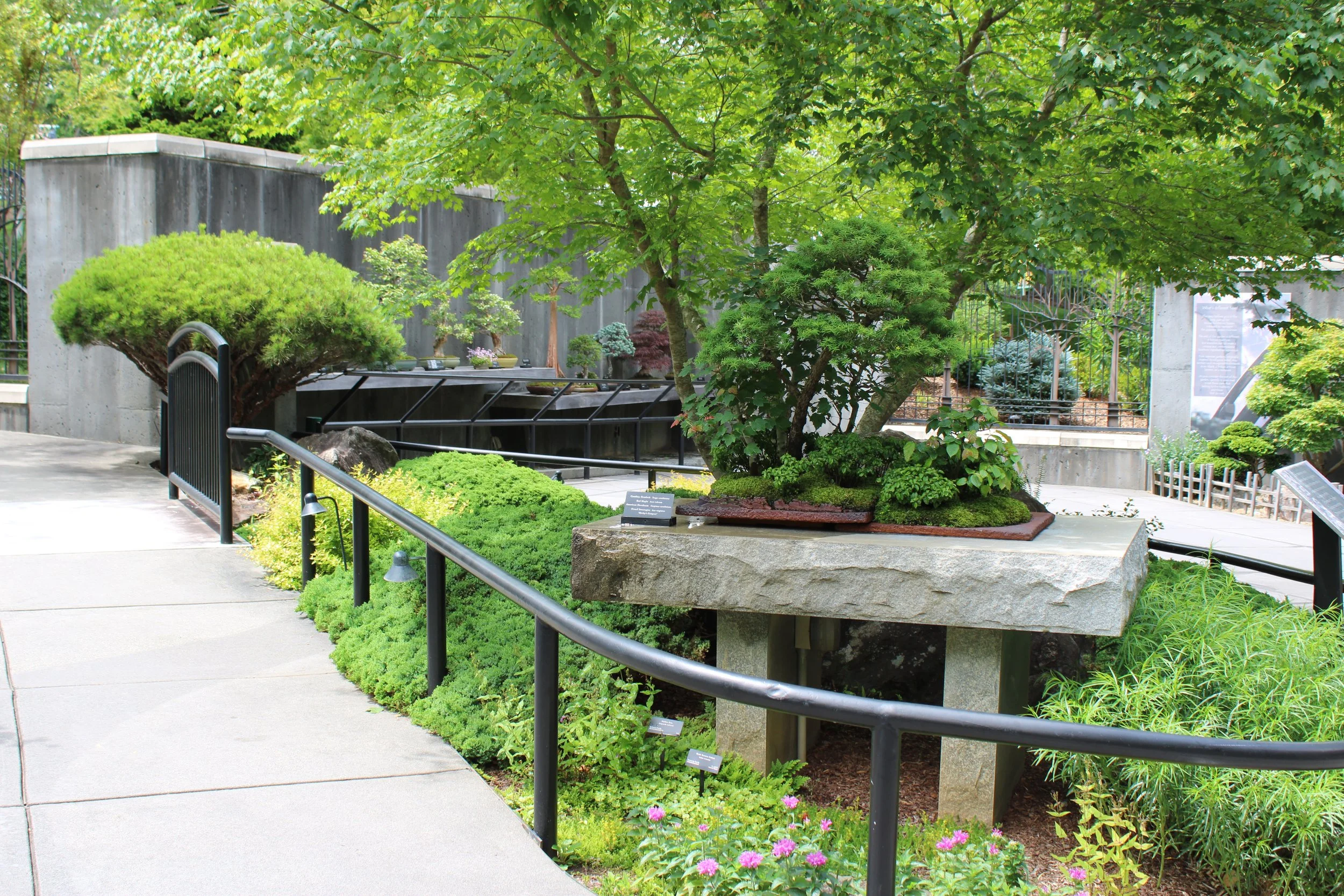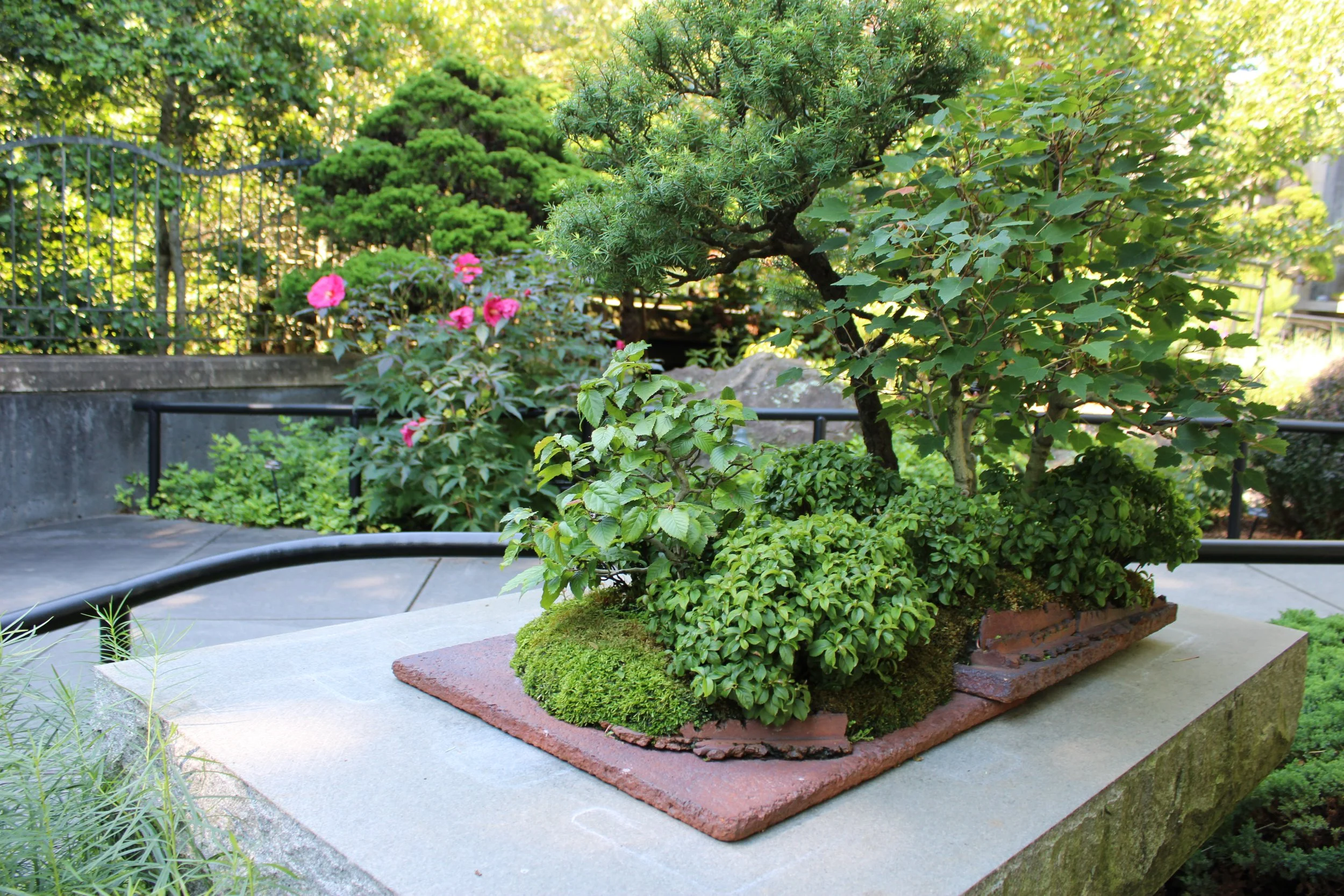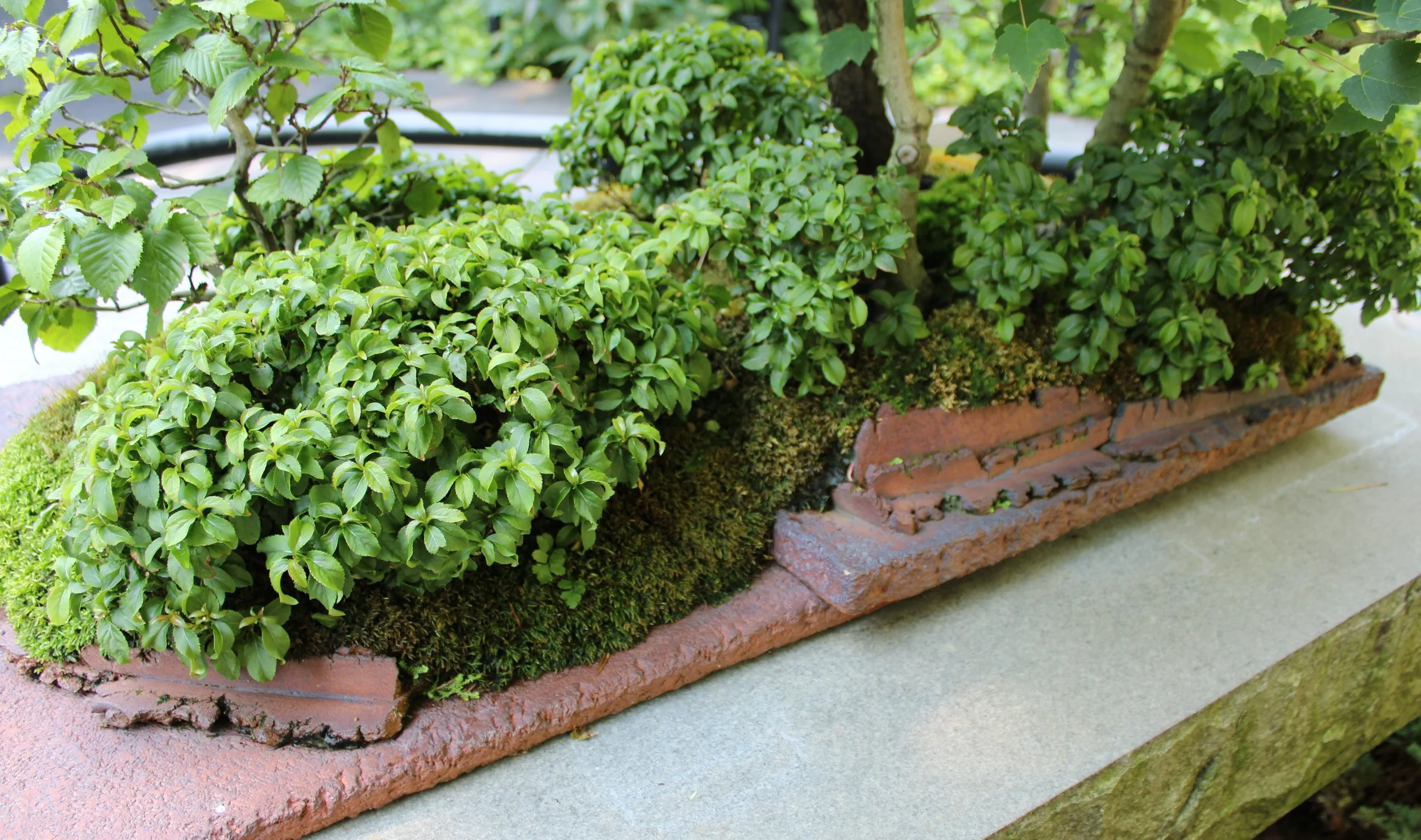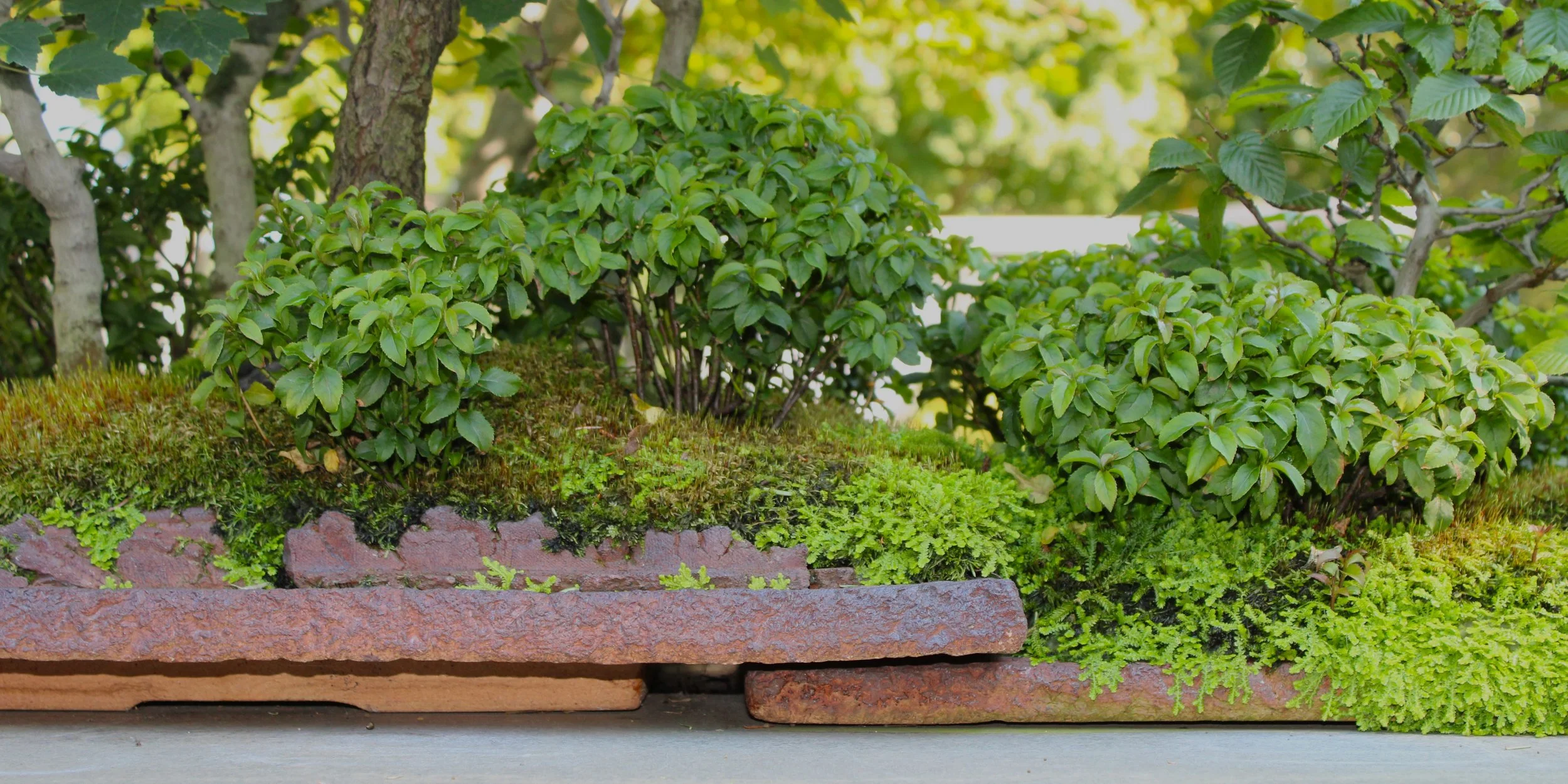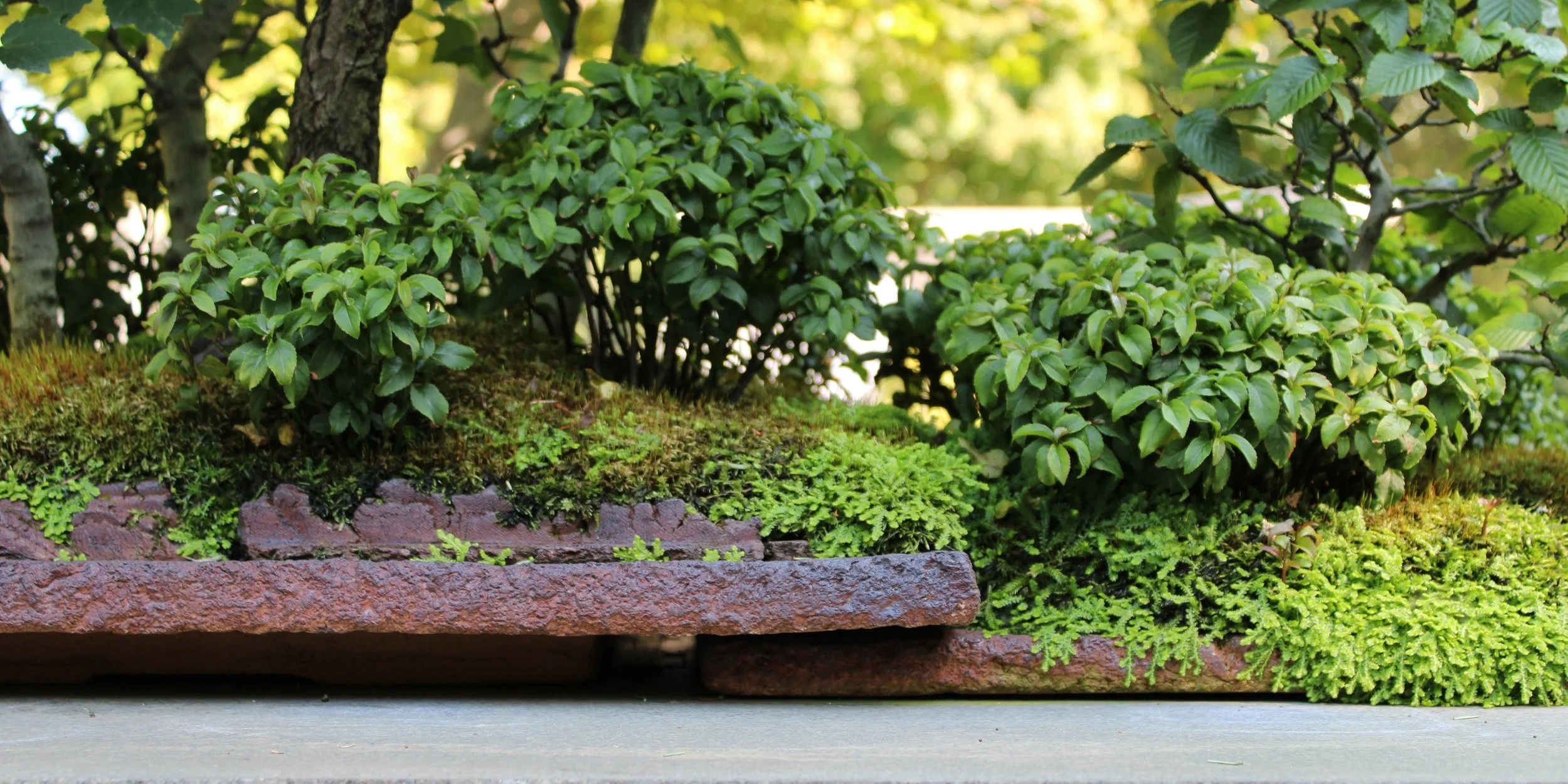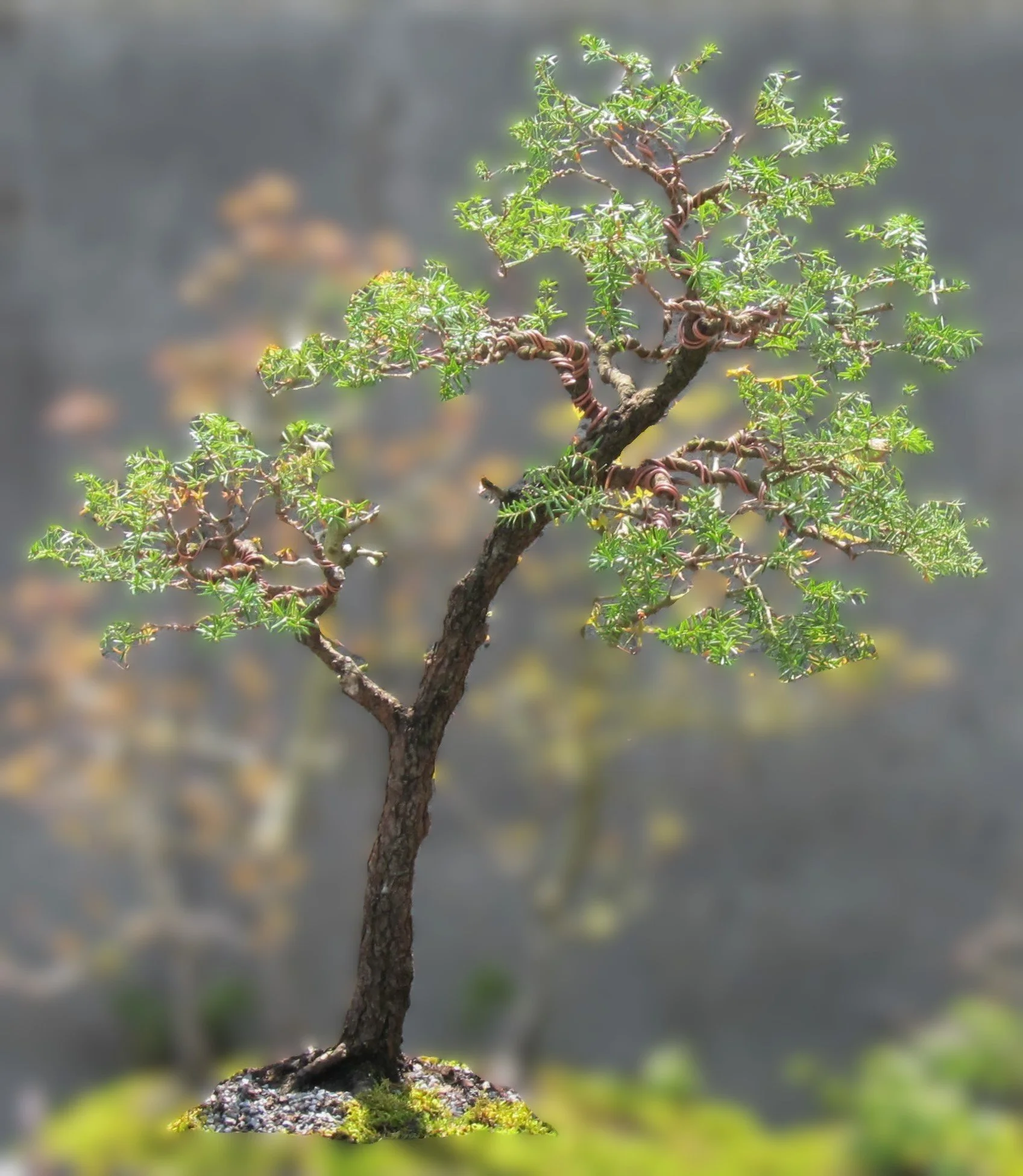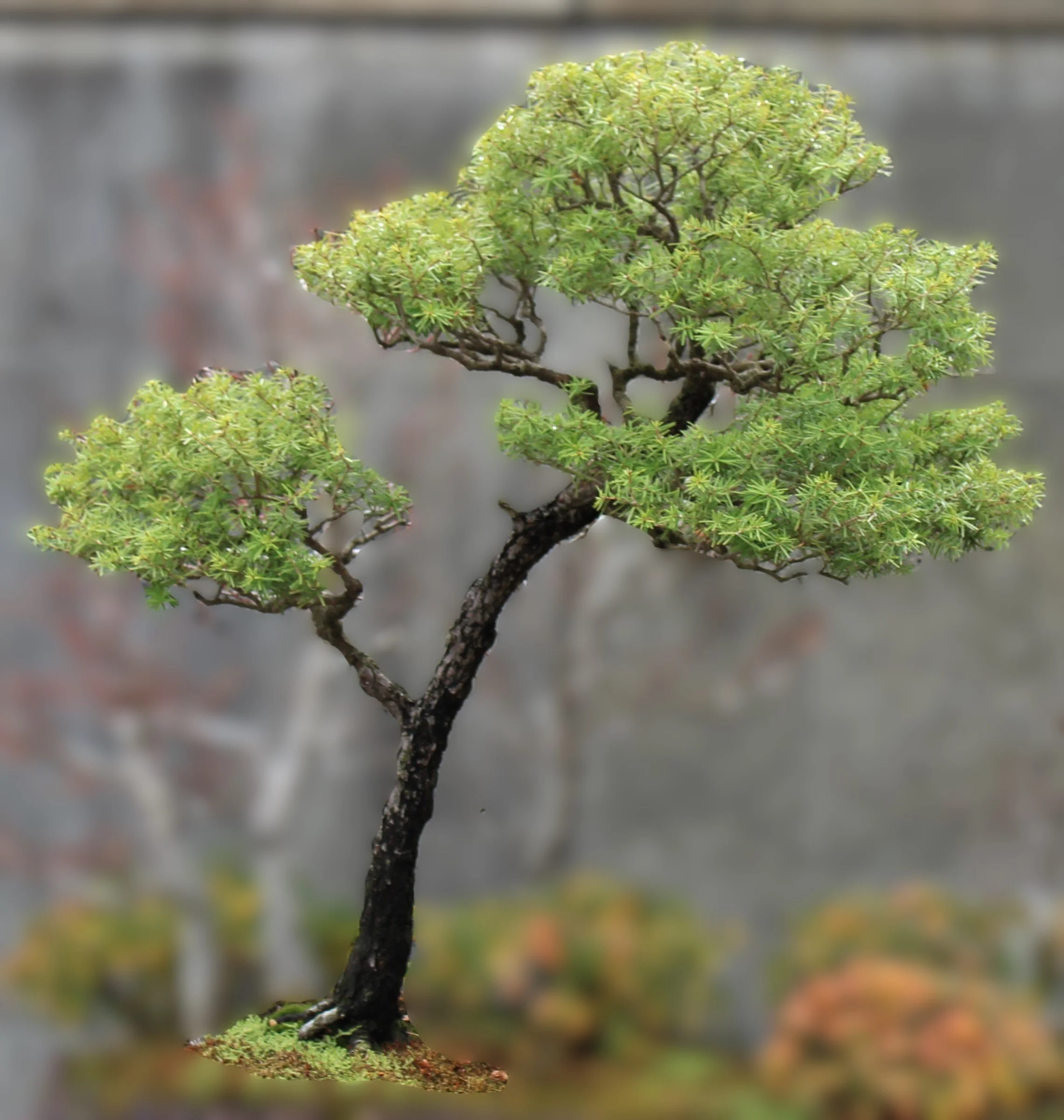Hemlock Landscape
Tray landscapes are a prominent feature of the Arboretum’s bonsai collection. Initially, the reason we invested heavily in them is because we were working with young plants, and tray landscapes are a good way to get the most out of young plant material. A single young tree might not have much presence, but if you take five or ten young trees and group them together their combined effect is greater. Add some different herbaceous plants and a few stones to this grouping of young trees and you begin to create a little scene. More visual interest is generated simply because there is more to look at.
It turned out that there was another benefit to working in the tray landscape format — our audience loved them. Visitors to the Arboretum are, by and large, not so well versed in bonsai. That is to say, our visitors are mostly people who enjoy plants and nature overall, but do not have a specific cultivated interest in the art of little trees. An arrogant way of looking at this is to say that our visitors are too uninformed to know good bonsai from bad bonsai. A more enlightened way of framing it is to say our visitors come to the Arboretum with open minds, unencumbered by firmly entrenched ideas about what bonsai is supposed to be. Without a scorecard delineating right and wrong, they have nothing more to go by than what appeals to them and what doesn’t. Tray landscapes strongly appeal to the general public.
The element of suggestion is central to the art of bonsai. With bonsai, a great deal of information is intentionally left out and it is incumbent on the viewer to fill in the missing pieces. When someone looks at a single-tree bonsai, they are presented with limited information. The viewer sees a little tree and a patch of ground, isolated within a container or sitting on a slab. The viewer might choose to process this information in a completely literal way. They might see only what is physically there — a little tree and a patch of ground. Alternately, the viewer might choose to employ their imagination to fill in a fantasy scene around what is physically there, creating a context in which the little tree exists. Is the tree in a forest or in a field? Perhaps the tree is on a mountaintop, or maybe it’s on the river shore, or in a yard next to a house, or arching over the entrance to an enchanted castle. The viewer decides this.
Tray landscapes give the viewer a helping hand by providing a little more information. The inclusion of multiple trees, shrubs, stones, and other components creates a more fully described image. This makes it easier for the viewer to do what they are supposed to do when contemplating any bonsai, which is to shrink themselves down to the correct size and step into the picture. Imagination is still required to engage properly with a tray landscape because, although a little more information is given, a lot is still left out. What is the scene around the scene? Where is this place and what would you do if you were there? No two people are likely to arrive at the exact same answers to those questions.
These days the specimens in the Arboretum’s bonsai collection are not quite so young and undeveloped as they were when we were starting out. Our audience is becoming more sophisticated, too. Thanks largely to the Arboretum, many people in these parts are now much more familiar with bonsai, much more little tree-literate. Still, tray landscapes remain prominent in our collection and popular with the general public. Not all of our visitors have been here before, and not everyone has the imagination necessary to fully engage with a suggestive art form. Tray landscapes remain a more accessible means to enter the miniature world.
Here is the story of one of the Arboretum’s tray landscapes. (This specimen really ought to have a poetic name, but as of yet it does not.) The scene is comprised of four different plant species: Carolina hemlock (Tsuga caroliniana), red maple (Acer rubrum), American hornbeam (Carpinus caroliniana) and dwarf Virginia sweetspire (Itea virginica ‘Shirley’s Compact’). The focal point of the composition, the main element around which the scene is constructed, is the Carolina hemlock. This tree was donated to the Arboretum early in the 2000s by Dana Markham of the Hinoki Bonsai Society in Roanoke, Virginia. Dana and her husband Bunky collected the little hemlock from a farmer’s field not far from where they lived, where the tree had survived years of bovine abuse. The Markhams grew the hemlock as a bonsai for a decade or more before donating it.
Here is what the hemlock looked like when it was growing as a single-tree bonsai:
May 2005
I appreciated this tree primarily as a native species seldom seen in bonsai use. The hemlock had some design issues, however, mostly owing to the curving nature of its trunk and the way that feature influenced branch distribution and development. I decided to remove a number of lower branches and then place the hemlock in a group setting with other trees around it. I used red maples because we had plenty of them on hand, and because their horticultural needs match up well with those of the hemlock. I also liked the contrast of the needle evergreen with the broadleaf deciduous. The arrangement was placed on a limestone slab:
October 2009
The tray landscape shown above never made it out on display in the bonsai garden. I was never happy with the look of it, owing mostly to a sense that the hemlock was too tall. I was reluctant to take the top out of it, however, because this was the only Carolina hemlock we had at the time and I didn’t know how it would respond to such a drastic alteration. So the landscape on the slab sat out in the hoop house, getting by on minimal care while I waited for a good idea to come to me about how to deal with it. Years went by.
The good idea never came, but a strong wind did. One day after a stormy night, my assistant went out to the hoop house and found the landscape laying on the ground. The tall hemlock had apparently acted like a sail catching the wind, and the whole composition was blown off the rock. The planting was well established but had never been fastened to the rock, so it just came off as one piece and went crashing down to the ground about three feet below. When I inspected it, I found the top had broken out of the hemlock.
If you procrastinate long enough, tough decisions will often be made for you. In the case of this Carolina hemlock, it was all for the best. The necessary lowering of the top having now been accomplished, I redesigned the tree, wiring up a branch to take over as the new leader, and the hemlock responded well. It took several more years for this to happen. In the meantime, I took the group of trees off the rock and planted it as a single unit in a plastic tub. The rock was given over to another planting.
I still liked the hemlock-maple combination, so I began to strategize about a new planting that would be built around those trees. I contacted North Carolina potter Ron Lang and discussed the need for a large ceramic slab for this new landscape project. In working with potters, I like to give them as much creative latitude as possible. Ron is a very creative person, and he had a unique idea for a two-tiered, overlapping slab design. He built it, and in a public demonstration on World Bonsai Day in 2019, I used Ron’s creation as the foundation of a tray landscape planting:
May 2019
The same configuration of a single hemlock and three red maples forms the core of the composition. A small American hornbeam, grown from seed collected in 2009, sits on the right side of the arrangement. The numerous small plants with green leaves are dwarf Virginia sweetspire. The hemlock, maples and hornbeam are all plants native to western North Carolina, while the dwarf sweetspire is a cultivated variety of another native plant.
The following image isolates the hemlock to show how its shape had been changed:
Since the the demonstration program in the spring of 2019, the hemlock landscape has frequently been on display in the bonsai garden:
July 2020
November 2020
May 2021
July 2021
November 2021
May 2022
November 2023
The deciduous plants in this landscape all have decent autumn coloration. However, they all go through seasonal change at a different time. The little hornbeam is the first to turn color:
The dwarf sweetspires are the last to change, waiting to show their muted tones until the maples and hornbeam have already shed their leaves:
The hemlock landscape planting is currently on display on the stone bench in the lower level of the bonsai garden. This is a great location for this piece, as all the plants in it appreciate the dappled sunlight they receive sitting beneath the nearby maple tree. The standalone nature of the display area highlights whatever specimen is placed there, but it does not lend itself well to photography. When viewing a bonsai on that table in person it is easy to “read” it, but a camera lens is not nearly as sophisticated as a human eye. When photographing a bonsai on that table, the subject often gets lost in the visually cluttered background:
June 2025
One potential advantage of being displayed on the table is that the bonsai can be seen from various angles, including from behind:
Part of Ron Lang’s creative design of the slabs for this landscape was the use of intriguingly crafted “walls” to act as borders around the planting zone. The walls are a fixed part of the structure on three sides of one of the two slabs. The other slab has no walls, but Ron provided several freestanding walls that could be placed wherever desired. In this backside view of the planting, the walls on the right side are fixed in place, while the one on the left is not:
Here is a closeup view of the overlapping of the two slabs. A flash on the camera was used to illuminate the underside of the slab on the left, revealing a recessed foot or foundation:
Without illuminating the underside of it, the slab on the left appears to float above the table:
Ron’s innovative slab design really makes this tray landscape shine! The focal point of the composition, however, remains the Carolina hemlock. These images show how the tree has matured over the last two decades:
2005
2019
2023
